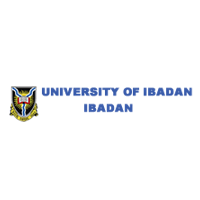Below is a summary of the abstract you submitted. Presenting author(s) is shown in bold.
If any changes need to be made, you can modify the abstract or change the authors.
You can also download a .docx version of this abstract.
If there are any problems, please email Dan at dar78@pitt.edu and he'll take care of them!
This abstract was last modified on March 14, 2022 at 6:41 a.m..

Arthrobacter bacteriophage Popper (accession number: MZ274308) was originally isolated by the University of Pittsburgh in the year 2017. The bacteriophage has a linear genome with a 3’ sticky overhang of 12 bases and was isolated on Arthrobacter globiformis B-2979 host. It has a genome length of 41822 base pairs, an approximate shotgun coverage of 1204X, and a G+C content of 65.24%. Whole-genome sequence alignment carried out on NCBI-BLASTn and phagesdb.org revealed high nucleotide sequence identity with other phages belonging to cluster FF. Notable genome similarities include Nandita (accession number: MH834621), Zaheer (accession number: MZ150784), and Ryan (accession number: MH834627). The visual comparison of the FF cluster identity was created using Blast Ring Image Generator (BRIG) and Artemis Comparison Tool (ACT). Pairwise similarity sorting of bacteriophage genomes using Phamerator revealed very close gene synteny amongst the cluster FF phages. Auto-annotation of the genome was carried out using GeneMark and Glimmer in-built gene predictors in DNA Master and RAST server, and both predicted 69 protein-coding features. ARAGORN and tRNAscan-SE analysis identified gene 36 as a tRNA. Visual inspection of the genome was conducted using both DNA Master and Artemis, while manual inspection for start site refinement was carried out using DNA Master, Starterator, and Phamerator. Putative protein functional assignment was identified using NCBI BLASTp, HHPred, and UniProt. The genome structural organization comprised of Eighty-eight percent forward transcribed genes and Twelve percent reverse-transcribed genes, out of the 69 manually validated protein-coding features. Sixty-three percent of the protein-coding features were assigned putative functions. Seventy-nine percent of proteins with coding features were forward-transcribed genes, comprising virion structural and assembly proteins, and lytic cycle proteins; Lysin A and Holin. The reverse-transcribed genes accounted for 21% of assigned putative functions, comprising lysogenic cycle proteins integrase, DNA Binding, Lipase, and Membrane proteins.

